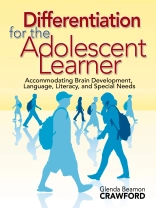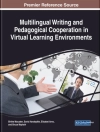‘There is something for everyone here. A valuable resource for experienced teachers starting on the road to curriculum integration or switching to teaching adolescents. Preservice teachers would also benefit, because the book emphasizes the nature of the learner.’
—Mark A. Springer, Teacher
Radnor Middle School, Wayne, PA
Activate learning with practical techniques that put brain research and technology into practice!
The changes and complexities of the adolescent mind bring unique challenges as well as opportunities to the classroom. This valuable resource for student-centered teaching provides keys to curriculum design, instruction, and assessment within the context of a developmentally appropriate, differentiated approach.
Translating the latest brain research into practical classroom strategies, the author focuses on the adolescent learner and outlines brain-compatible instructional strategies applicable to all students, including English Language Learners, gifted populations, and others with special needs. Readers will encounter a six-point differentiated model based on adolescents′ need for personal connection, appropriate intellectual challenge, emotional engagement, guided social interaction, metacognitive development, and a supportive learning environment. The guide also equips teachers with ready-to-use tips, tools, and resources, including:
- Ways to capitalize on technology to enhance differentiated instruction
- Brain-friendly strategies grounded in current neuroscience research and universal design for learning (UDL)
- Straightforward explanations on how changes in adolescent brain structure impact learning
- Techniques to create and manage a classroom environment aligned with adolescents′ specific developmental needs
Focusing on learners′ intellectual, social, and emotional development, Differentiation for the Adolescent Learner offers a proven plan for teachers to create meaningful learning experiences that inspire students to take control of their own learning.
Зміст
Foreword by David H. Reilly
Acknowledgments
About the Author
Introduction and Overview
1. Differentiation and the Learning Brain
It′s All About Good Teaching Practice
The Learning Brain
Universal Design for Learning (UDL)
Cognitive Access for Learning
Evolving Conversations About Differentiation
Developmentally Responsive Differentiation
The Language of Differentiation
Content Differentiation
Process Differentiation
Product Differentiation
Powerful Learning Experiences
Differentiation Design Principles
Summary and Looking Ahead
2. Differentiation and Adolescent Development
Adolescent Development
Adolescents as Learners
Personal Connection
Emotional Engagement
Appropriate Intellectual Challenge
Purposeful Social Interaction
Metacognitive Development
A Supportive Learning Environment
A Prime Time for Learning
Brain-Compatible Instruction: A Summary
Summary and Looking Ahead
3. Adolescent-Centered Differentiation: Evaluation, Expectation, Engagement, and Exploration
Start With the Students
A Curriculum of Consequence
Getting and Keeping Their Attention
Flexigle Opportunities for Interaction
Summary and Looking Ahead
4. Metacognitive Extension in Adolescent-Centered Differentiation
The Power of Adolescent Metacognition
Cognitive Modeling
Metacognitive Coaching
Guided Metacognitive Inquiry
Teaching for Transfer
Differentiation in PBL: Two Examples
Summary and Looking Ahead
5. A Differentiated Learning Environment: The Affective, Social-Emotional, and Physical Dimensions
Invitations to Learn
The Social Dimension of the Learning Environment
Varying the Physical Environment
Managing the Differentiated Learning Environment
Summary and Looking Ahead
6. The Intellectual Dimension in the Differentiated Environment
The Intellectual Dimension of the Learning Environment
Interaction in the Differentiated Learning Environment
The New Geography of Learning
Summary and Looking Ahead
7. Learning Patterns and Profiles
Patterns of Responsive Teaching
Determining Student Variance
Clusters of Commonality
Cluster 1: Gifted or Advanced Learners
Cluster 2: English Language Learners (ELL)
Cluster Group 3: Students With Learning Challenges
Summary and Looking Ahead
Epilogue: A Shared Commitment to Equity
Project-Based Learning
In Conclusion
Glossary of Adolescent-Centered Differentiation Terminology
References
Index
Про автора
Glenda Beamon Crawford’s experiences with young adolescent learners span nearly thirty years. She has taught in grades 4–12 and currently coordinates the middle grades program at Elon University, where she is a professor of teacher education. She has authored three books, including Managing the Adolescent Classroom and Sparking the Thinking of Students, Ages 10–14, as well as articles on structuring classrooms for adolescent thinking and learning. She consults and presents regularly at state, national, and international conferences. Her research and teaching honors include the 2002 North Carolina Award for Outstanding Contribution to Gifted Education, the North Carolina ASCD Outstanding Research Award, and the Teacher of the Year Award.












